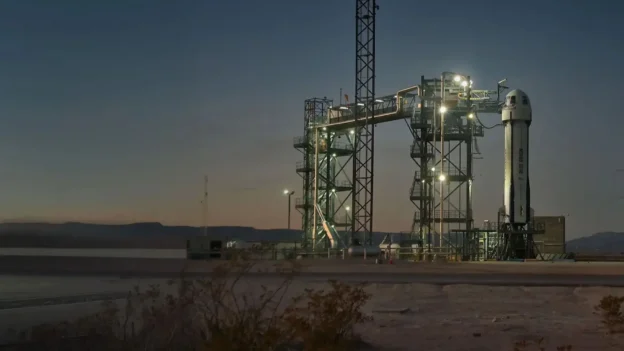Blue Origin’s reusable rocket Blue Origin’s reusable rocket, New ShepardNew Shepard will re-launch Saturday, Aug. 23, from its pad in West Texas with an uncrewed mission carrying more than 40 scientific and educational payloads aboard.
A major component of the NS-35 mission cargo manifest is the participation of 24 TechRise Student Challenge projects, promoted by NASA and managed by Future Engineers. These experiments cover topics such as space agriculture, medical technologies, and fluid behavior in microgravity.
Also on board are thousands of postcards collected by Club for the Future, Blue Origin’s educational organization that works with institutions to promote science and technology education.
The New Shepard reusable rocket and its advanced technology
During the brief period of microgravity generated in the suborbital flight, technologies such as the fuel cell developed by Teledyne in conjunction with NASA’s Glenn Research Center. This innovation aims to provide electricity and water for future lunar and and Martian missions.
Another project of note is the University of Florida’s BISS system, which analyzes biological responses using fluorescence imaging technology. This flight marks its fifth test in a suborbital environment.
The rocket will also carry onboard the PROTO and MUD experiments, developed by Carthage College, focused on improving the measurement of fuel levels and detection of liquid-vapor interfaces in space tanks, a key factor for future on-orbit refueling operations.
The booster used is the same one used on the NS-29 mission and will operate alongside the RSS HG Wells capsule. The launch window opens at 7:30 a.m. CDT (12:30 UTC), and the live broadcast will begin 15 minutes before liftoff.
Teachers from different U.S. states are also part of this mission thanks to the Teachers in Space program. Their experiments include studies on radiation, sound and environmental data, developed in the classroom with their students.
Source and photo: Blue Origin

